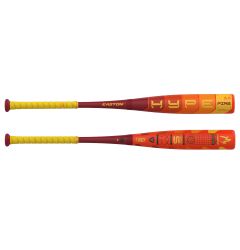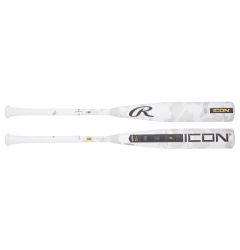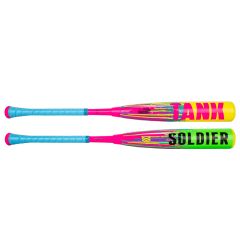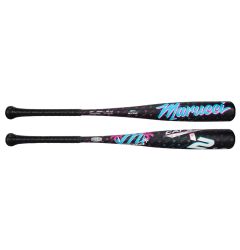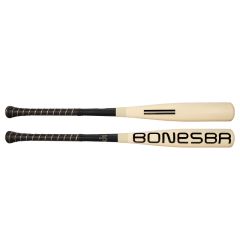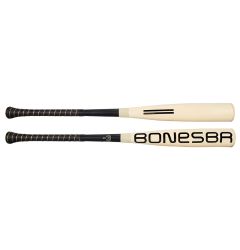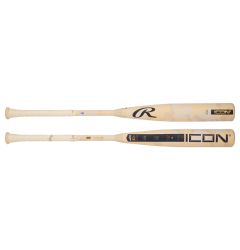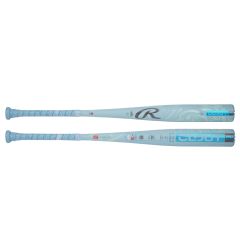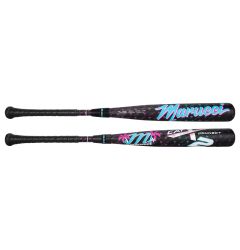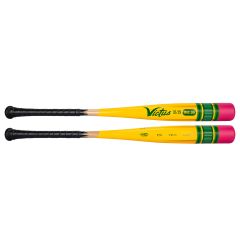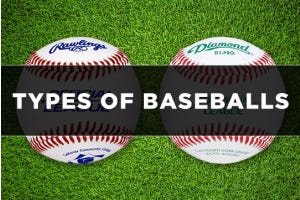What Size Bat Should You Get for Your 13-Year-Old?
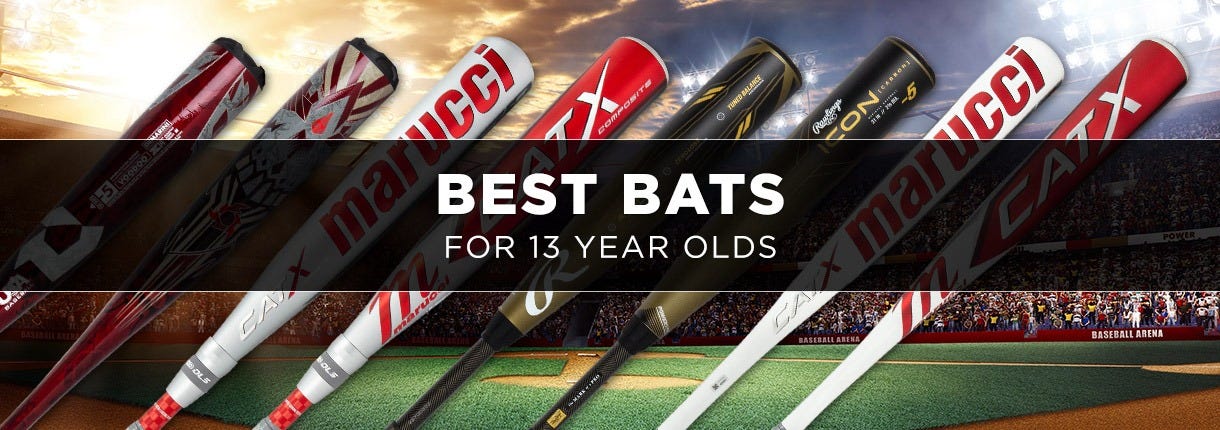
Hello and welcome to our guide on choosing the perfect baseball bat for 13-year-olds! This article will help you select the right bat size using our easy-to-follow chart, ensuring a great fit. We’ll cover key factors like weight, length, and material, and highlight top bats that offer the best balance of durability, performance, and value. With detailed reviews, you'll find the ideal bat to boost your young player's game and enjoyment on the field. Let’s get started on finding the perfect bat for your 13-year-old ballplayer!
In this article, we’ll cover:
- How to Choose the Right Size Bat for an 13-Year-Old
- Determine The Right Length Baseball Bat for an 13-Year-Old
- Determine The Right Weight Baseball Bat for an 13-Year-Old
- Understand What Bat Drop Is
- Understand League Requirements and Rules for Bats
- Decide on a Budget
- List of the Best USSSA Baseball Bats for 13-Year-Olds
- List of the Best BBCOR Baseball Bats for 13-Year-Olds
- What Size Bat Should You Get for Your 13-Year-Old FAQs
How to Choose the Right Size Bat for an 13-Year-Old
Here’s a step-by-step guide to selecting the right baseball bat for your 11-year-old:
- Determine Bat Length:
- Consult our complete buying guide for detailed recommendations.
Alternatively, have the player extend their arms parallel to the ground and measure from the center of their chest to the end of their fingertips to find the appropriate bat length.
- Consult our complete buying guide for detailed recommendations.
- Select the Bat Weight:
- For 13-year-olds, most use a -5 bat, but some may opt for a -3 to prepare for high school. Select the bat drop based on personal preference and future needs.
- Choose Bat Material:
- Decide between aluminum and composite materials.
- Decide on Bat Construction:
- One-Piece Bats: Offer a rigid feel and better energy transfer but may transmit more vibrations to the hands.
- Two-Piece Bats: Provide flexibility, more whip, a larger barrel, and better vibration dampening.
- Evaluate and Choose:
- Consider the attributes of each bat type in relation to your playing style and preferences. Select the bat that best suits your needs and enhances performance.
Determine The Right Length Baseball Bat for an 13-Year-Old
To select the right length, you can consult our baseball bat size chart. For 13-Year-Olds, we normally recommend a length of 31-32 inches. In addition to the size guide, To learn how to measure bat size and length, find the right bat weight and bat drop weight in the easy-to-follow steps below.
- Measure from Your Chest to Fingertips: To begin determining how to size a baseball bat, start by extending your arm horizontally so it’s parallel to the ground. Measure from the center of your chest to the end of your fingertips. Use this measurement to start finding the proper baseball bat length.
- Finding Bat Length by Height: The next tactic can be especially valuable when determining youth baseball bat sizes for younger players since players will be at different stages of growth. While resting the knob of the bat in the center of the palm when standing, the head of the bat should just rest on the floor.
- Bat Length by Arm Length: A third technique used for measuring baseball bat size starts by placing the handle of the bat in the center of your chest. Extend the bat forward and if your arm can reach the barrel, the bat is an appropriate length.
Determine The Right Weight Baseball Bat for an 13-Year-Old
For a 13-year-old, a bat weight between 26 to 29 ounces is ideal, balancing control and swing speed. A lighter bat helps with swing mechanics and reduces arm strain, but ensures it's not too light to sacrifice power. Letting the player test different weights can help find the best fit for their comfort and style.
Understand What Bat Drop Is
Bat drop is the term that refers to the difference between the length of the bat (in inches) and the weight of the bat (in ounces). It is always shown as a minus number and the higher the weight drop, the lighter the bat. For example, a 30” bat with a
Weight of 25 oz has a drop of -5. For 13-year-olds, we recommend starting with a drop -5 and adjusting based on the player’s size and skill.
Understand League Requirements and Rules for Bats
In youth baseball, there are two main governing bodies for leagues and tournaments. There is USA and USSSA. These organizations have different rules for their baseball bats. When picking your next baseball bat, consider what rules your league or tournament follows to ensure you pick a bat that is certified for play.
Evaluate Bat Materials
- Material Choices:
- Aluminum: Known for durability and a stiff feel.
- Composite: Made from materials like carbon fiber, offering a softer feel and better vibration dampening.
- Construction Types:
- One-Piece: Provides a firmer feel and better energy transfer but can transmit more vibrations to the hands.
- Two-Piece: Offers flexibility and a larger barrel, increasing whip and reducing vibrations to the hands.
- Preferred Design for 13-Year-Olds:
- Most 13-year-olds favor the two-piece composite design.
- The larger barrel helps with contact, and the improved vibration dampening reduces discomfort in young players’ hands.
Decide on a Budget
No matter what your budget might be, you can find a bat on our website that suits the player’s needs while staying within a budget. A one-piece alloy bat will typically be the least expensive, a hybrid bat that is half alloy and half composite will be a mid-range price point, and a full-composite bat will typically be the most expensive. At Baseball Monkey we carry many options under $99. If you are after more features, we have a great selection to choose from!
General Bat Sizing Wave Chart for 13 Year Olds
Deciding between bat sizes and weight drop for a 13-year-old can be a bit confusing. To get a better visual on sizing a 13-year-old with a baseball bat, this wave chart will show the ranges dependent on the player’s size. 2-3 sentence paragraph introducing the chart similar to this one adapted for 13-year-olds.
List of Best USSSA Baseball Bats for 13-Year-Olds
Overview:
- This latest model takes the most popular bat in the game and refines it with advanced Thermo-Composite technology, expanding the sweet spot and delivering impressive exit velocities throughout the barrel. Collaborating with top players, Easton has optimized the Opti-Flex handle to ensure each bat size provides the perfect balance of flex and stiffness for ideal bat speed and barrel control. The elastomer connector between the barrel and handle eliminates vibrations and stings on mishits—though you might not experience many with this bat. Plus, Easton’s renowned Power Boost Soft Knob enhances comfort in your bottom hand and boosts leverage, helping you harness maximum power in your swing.
Key Features:
- TCT Barrel: High performing composite barrel combines a maximized sweet spot and performance
- Swing Weight: Light swing weight feel with a low MOI, produces more bat speed and barrel control
- Power Boost Soft Knob: Provides hitters with more leverage, while reducing vibration and improving comfort
Overview:
- Crafted with cutting-edge In/Tense Carbon Composite for unrivaled performance. Its fully engineered seamless construction ensures maximum barrel size and optimal stiffness, enhancing the trampoline effect on contact. The bat features a tuned balance for a slightly end-loaded feel, ideal for players seeking speed and power. Zero Loss Technology strengthens the TPU connection, providing added durability and handle stiffness. With a two-piece composite design combining a composite handle and barrel, it boasts the largest, most forgiving barrel preferred by elite hitters.
Key Features:
- In/Tense Carbon Composite: Fully engineered seamless carbon composite construction maximizes barrel size and performance while maintaining optimal stiffness and increased trampoline
- Swing Weight: Tuned balance performance design provides a balanced swing weight with slight end loaded, best for all players who want maximum speed and performance
- Two-Piece Composite Construction: Composite Handle + Composite Barrel created largest most forgiving barrel with stiffness preferred by elite hitters
Overview:
- As the official Metal Bat of Perfect Game, this 2-piece composite bat is engineered to deliver unmatched performance on the diamond. Its enormous barrel and sweet spot ensure explosive contact with the ball, while the scientifically engineered 7312 Trampoline Composite and Power Connector generate exceptional whip through the zone. Crafted with a full taper for premium leverage and a premium soft comfort tack grip, this bat offers unrivaled control and feel. Despite its power-centric design, it maintains an impressively light swing weight, allowing for lightning-fast bat speed.
Key Features:
- The official Metal Bat of Perfect Game!
- 2-Piece Composite
- Extremely Light Swing Weight
Overview:
- Designed for elite athletes, this special edition bat combines sleek aesthetics with top-tier performance. Its one-piece alloy construction offers a clean, consistent swing, while the precision-balanced design provides speed and control with a lower M.O.I. The Liquid-Gel System reduces vibrations for a smoother feel on contact, and the AZR Aluminum alloy enhances durability and responsiveness. With a multi-variable wall design, the sweet spot is expanded for more forgiving off-center hits. The ring-free barrel construction ensures no “dead” spots, and the custom-molded handle taper allows for a perfect fit and increased control.
Key Features:
- One-Piece Alloy Construction: clean, consistent, traditional swing feel
- Liquid-Gel System: patented anti-vibration technology features the optimal amount of liquid-gel in the knob and endcap to reduce and absorb vibrations from both ends of the bat, creating a smooth, solid feel during contact
- Custom-Molded Handle Taper: ergonomically designed for each weight drop for a better fit, more bat control, and a better overall feel between athlete and bat. Designed to be easily removable to fit athletes’ preferences.
Overview:
- Designed for speed, power, and control, it offers a perfect balance of explosive power and a smooth, buttery feel. The ultra-light, durable Katana2X Alloy Barrel, with its double-taper design, delivers maximum whip through the zone and a larger sweet spot, ensuring a no-vibration feel with maximum power. Featuring a stiff connection joint and composite handle with Warstic’s patented Pommel Precision Knob, it provides unparalleled grip and comfort, reducing the risk of injuries while giving hitters unmatched control.
Key Features:
- Katana2X Alloy Barrel constructed of ultra-light weight premium alloy with a double taper barrel shape to maximize sweet spot and increase whip thru the zone
- 2 Piece Hybrid - Enhanced alloy barrel with ultra stiff composite handle allows for massive barrel size that whips thru the zone with less feedback in the hands
- Tsuka Pro-Tact Grip features increased tackiness and cushioning for ultimate comfort and control
List of the Best BBCOR Baseball Bats for 13-Year-Olds
Overview:
- Designed for speed, power, and control, it offers a perfect balance of explosive power and a smooth, buttery feel. The ultra-light, durable Katana2X Alloy Barrel, with its double-taper design, delivers maximum whip through the zone and a larger sweet spot, ensuring a no-vibration feel with maximum power. Featuring a stiff connection joint and composite handle with Warstic’s patented Pommel Precision Knob, it provides unparalleled grip and comfort, reducing the risk of injuries while giving hitters unmatched control.
Key Features:
- Katana2X Alloy Barrel constructed of ultra-light weight premium alloy with a double taper barrel shape to maximize sweet spot and increase whip thru the zone
- 2 Piece Hybrid - Enhanced alloy barrel with ultra stiff composite handle allows for massive barrel size that whips thru the zone with less feedback in the hands
- Tsuka Pro-Tact Grip features increased tackiness and cushioning for ultimate comfort and control
Overview:
- Crafted with cutting-edge In/Tense Carbon Composite for unrivaled performance. Its fully engineered seamless construction ensures maximum barrel size and optimal stiffness, enhancing the trampoline effect on contact. The bat features a tuned balance for a slightly end-loaded feel, ideal for players seeking speed and power. Zero Loss Technology strengthens the TPU connection, providing added durability and handle stiffness. With a two-piece composite design combining a composite handle and barrel, it boasts the largest, most forgiving barrel preferred by elite hitters.
Key Features:
- In/Tense Carbon Composite: Fully engineered seamless carbon composite construction maximizes barrel size and performance while maintaining optimal stiffness and increased trampoline
- Swing Weight: Tuned balance performance design provides a balanced swing weight with slight end loaded, best for all players who want maximum speed and performance
- Two-Piece Composite Construction: Composite Handle + Composite Barrel created largest most forgiving barrel with stiffness preferred by elite hitters
Overview:
- Crafted with Red Alloy+ aerospace-grade alloy, it boasts a thin-walled design for maximum responsiveness. The swing weight is optimized with Pure Velocity carbon composite, extending the sweet spot for enhanced contact. Featuring Generative AI Technology, each inch of the bat is finely tuned for superior performance. Its one-piece construction offers a mid-load swing weight and optimized stiffness.
Key Features:
- Red Alloy+: Utilizes the most responsive aerospace-grade alloy, built for performance and durability with the thinnest wall possible
- Generative Ai Technology: Patent pending Ai generated technology that finely tunes the performance of the bat 1/8” by 1/8” across the entire bat providing maximum performance over a larger portion of the barrel
- One-Piece Construction: Mid-load swing weight with optimized stiffness and ultimate performance
Overview:
- The Marucci CATX2 Connect Baseball Bat blends power and comfort with its two-piece hybrid design. An end-loaded AZR alloy barrel and S-series composite handle maximize performance, while the Liquid-Gel System and OLS Connection reduce vibrations. Built for elite players, it delivers explosive power, control, and durability.
Key Features:
- Increased Barrel Length & Mass: refined shape adds ¼” more barrel length while adding more mass
- Power Loaded Barrel: end-loaded, high M.O.I. barrel designed for effortless power
- Custom-Molded Handle Taper: ergonomically designed for each weight drop for a better fit, more bat control, and a better overall feel between athlete and bat. Designed to be easily removable to fit athletes’ preferences
Overview:
- Crafted from cutting-edge VXP alloy, this bat redefines performance with enhanced pop and durability. Its one-piece aluminum construction delivers a classic swing feel, ideal for every hitter. Featuring a mid-balanced design and ergonomic handle taper, it ensures optimal bat control and comfort. The micro-perforated soft-touch grip adds finesse, while a vibration-reducing knob minimizes sting on off-center hits. Engineered with a ringless barrel design of variable wall thickness, it creates a dynamic sweet spot for unparalleled performance.
Key Features:
- One-piece aluminum design offers a clean, consistent, traditional swing feel
- Ergonomic handle taper custom-fit for each weight drop for more bat control and better overall feel. Designed to be easily removable to fit athletes’ preferences
- Vibration reducing knob mitigates sting and unwanted feedback from off-center hits
What Size Bat Should You Get for Your 13-Year-Old FAQs
What is the recommended bat length for a 13-year-old?
- The recommended bat length for a 13-year-old typically ranges from 30 to 32 inches. This length provides a good balance between reach and control.
What drop weight should a 13-year-old's bat have?
- A bat with a drop weight between -5 and -33 is generally suitable for a 13-year-old. This drop weight range helps balance power and swing speed.
What factors determine whether to choose a composite or alloy bat for a 13-year-old?
- Choose a composite bat for better vibration dampening and a larger sweet spot, ideal for players seeking comfort and performance. Opt for an alloy bat if durability and a stiffer feel are more important.
Should I prioritize a balanced or end-loaded bat for my 13-year-old?
- A balanced bat is usually better for younger players who need control and faster swing speeds. An end-loaded bat may be preferred if your child has the strength to handle additional weight for increased power.
Does the brand of the bat matter for a 13-year-old?
- While the brand can indicate quality, the most important factors are the bat’s fit, feel, and suitability for your child's skill level. Trusted brands often offer reliable options, but focus on finding a bat that matches your young player's needs.




